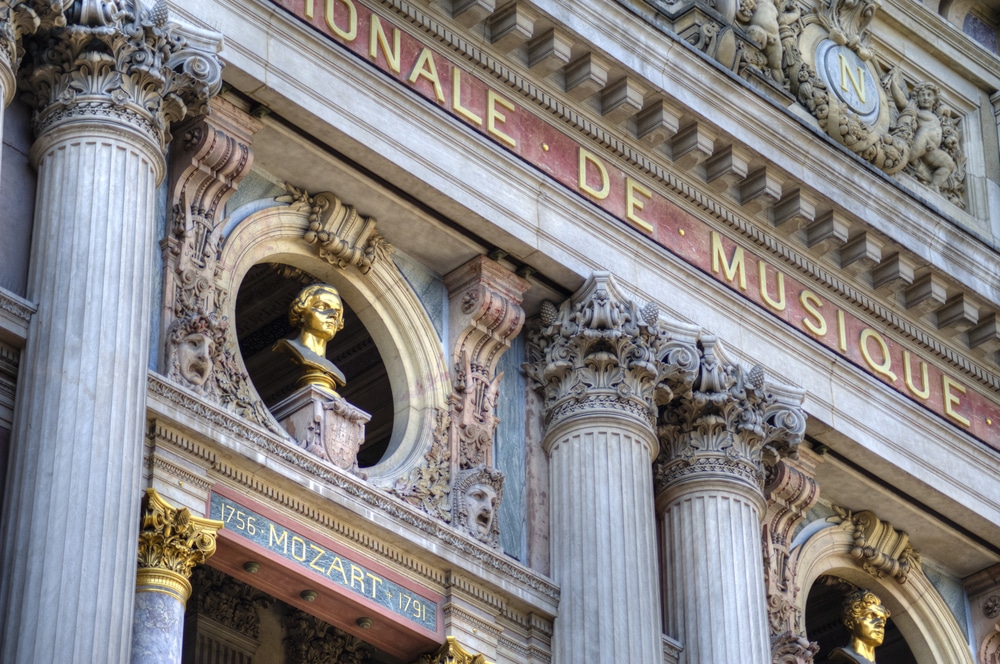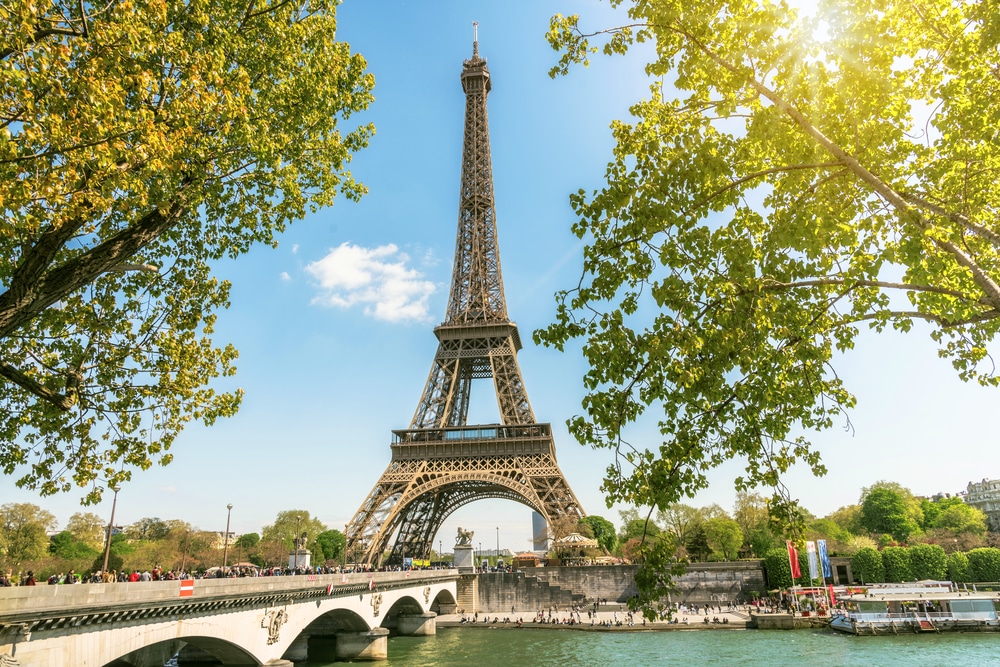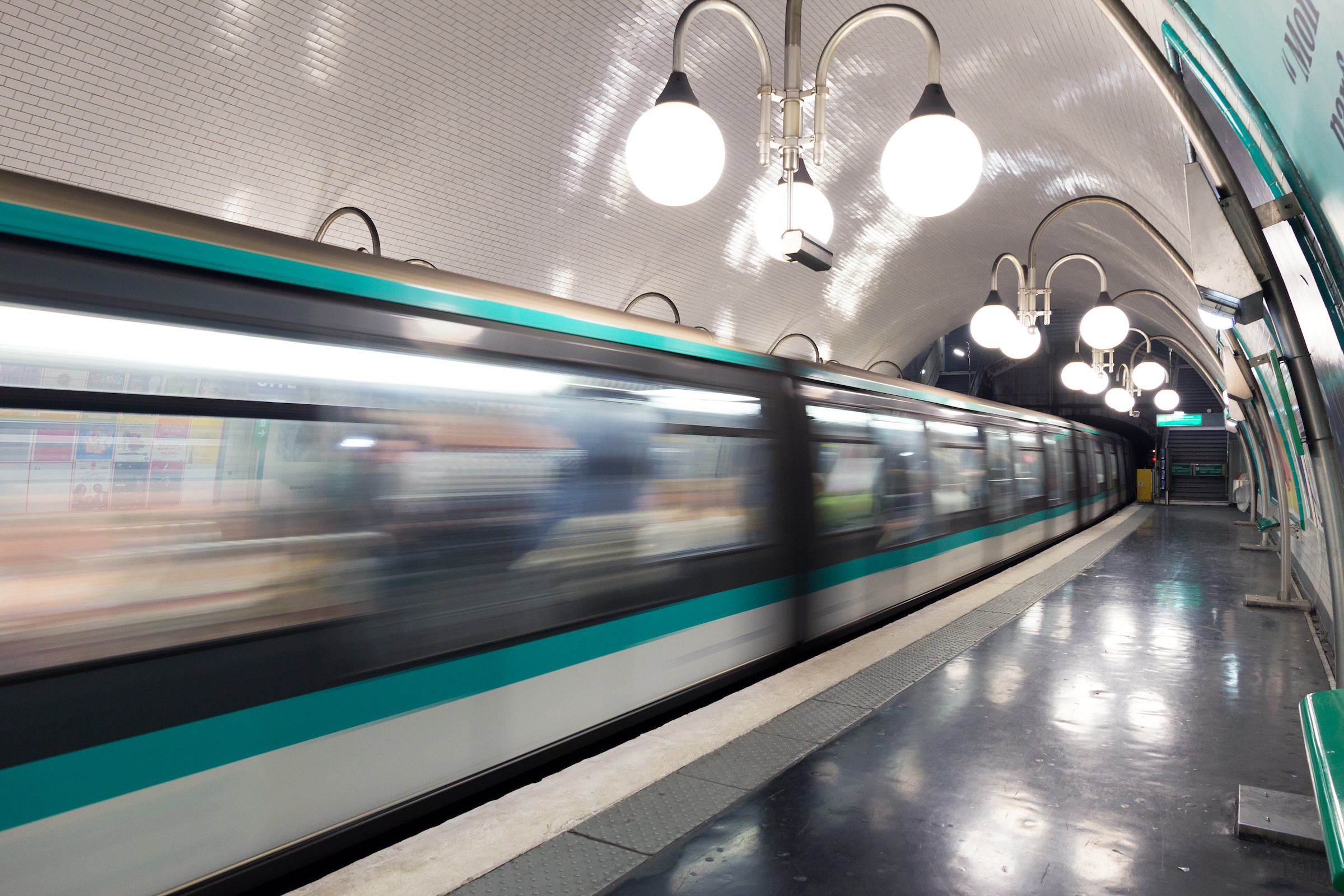Opéra Garnier
With its imposing appearance and lush decor, it dominates the Place de l'Ópera and the surrounding streets. Around the opera square, the otherwise colourful, flashing billboards are restrained in terms of colour. The most attention in this place belongs to the world-famous Opéra in the Palais Garnier.

In the best location
While the Opera Square is assigned to the second arrondissement of Paris, the Opéra Garnier is already located in the ninth. The snail-shaped course of the Parisian districts makes it possible. The opera house at the Rue Scribe 8 and the square with the subway station Opéra are only separated by the Rue Auber. Numerous buses and metro lines stop around the Opéra Garnier. The Roissybus takes you directly from Charles-de-Gaulle airport to the opera house in 50 minutes.
Clean lines and lavish decor
The Opéra Garnier owes its name to its builder Charles Garnier. During the radical transformation of Paris under the direction of the widely known Baron Haussmann, the architect was commissioned to build a prestigious new building. Although he was not yet very well known, he was able to win the competition. The new Paris Opera House was built between 1860 and 1875, whereby the construction was interrupted in 1870/1871 due to the war. On January 5th, 1875, the Palais Garnier opened its imposing rooms and the Parisian society applauded not only the artists on stage. Also the architect Garnier got a lot of applause. It was above all the magnificent rooms, staircases and halls that inspired.
Discoveries at the Palais Garnier
While up to 450 actors can perform on the opera stage, the auditorium has room for around 2,000 visitors. The opera house offers much more than famous ballets and opera performances. Paintings, sculptures, temporary exhibitions, the library and the archives attract many visitors all year round. Individual or guided tours reveal the complex beauty of this unique building. Much attention is paid to the gigantic ceiling painting in the large auditorium. It was created in 1964 according to a design by Marc Chagall. The painting is a proud 220 square metres in size and consists of 12 canvas segments. The artist Roland Bierge, who died in 1991, realized Chagall's design. The archives of the Library Museum contain numerous documents on the original painting and the redesign of the plafond.
Legends
At the Palais Garnier, visitors naturally walk in the footsteps of the Phantom of the Opera. Among the mystical places in the Palais Garnier are box number 5, reserved for the Phantom, and the underground reservoir. The artificial basin, described as a lake in Gaston Leroux's novel, is a concession to the marshy building ground.
From time immemorial, the legendary opera ballet, which included the century-old dancer Rudolf Nurejev as a guest and later as director of the ballet, has enjoyed special esteem. During his time as ballet director (1983-1989), he contributed significantly to improving training and rehearsal conditions and promoted numerous talents. Nurejev's grave is located near Paris in the Russian cemetery of Sainte-Geneviève-des Bois and is a place of pilgrimage for ballet fans from all over the world.




